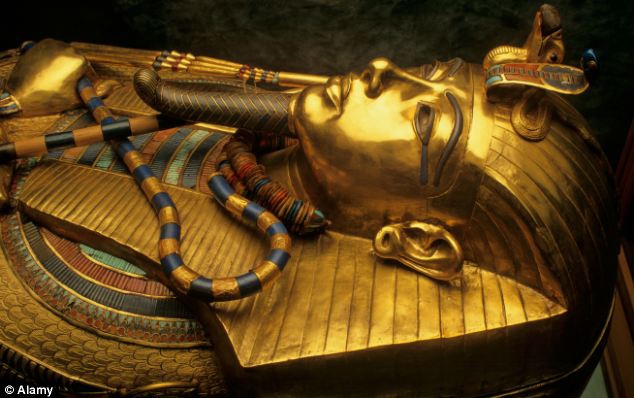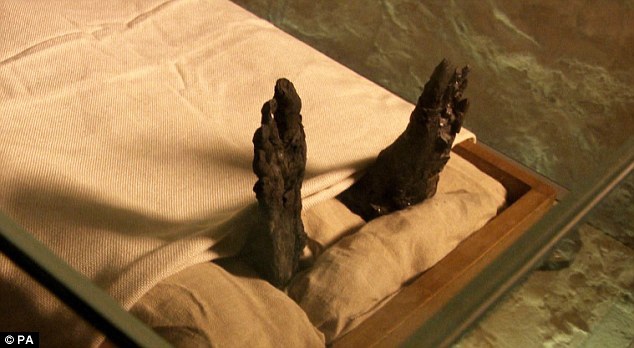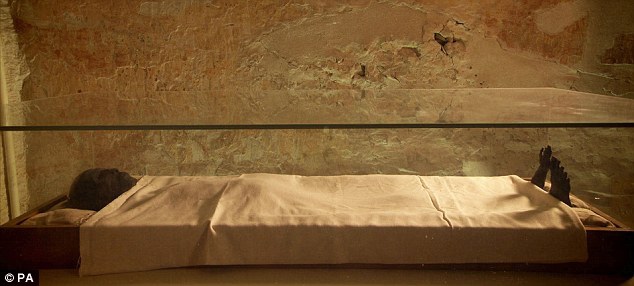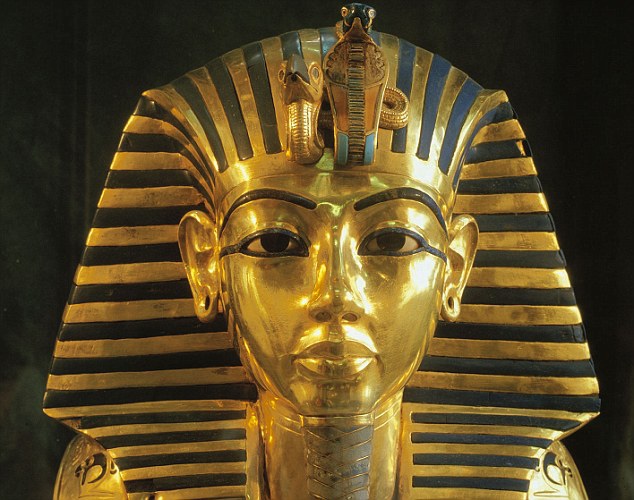







Mummy-fried!Tutankhamun's died in speeding chariot accident
Mummy-fried!Tutankhamun's body spontaneously combusted Inside his coffin following botched embalming job after he died in speeding chariot accident
l The Egyptian boy pharaoh “burst into flame after chemical reaction”
l His body caught fire inside sarcophagus thanks to embalming fluid
l Scientists also believe a chariot crash was the cause of his death
* Fire:Tutankhamun burst into flame inside his sarcophagus because of a chemical reaction from the chemicals he was embalmed with
* Researchers confirmed his body was burnt while sealed in his coffin after testing a fragment of his flesh
* Engulfed:This picture shows the boy king's charred feet
* Echoes of history:A mummy tissue sample of Egyptian pharaoh Tutankhamun
* Tut was the last of the royal line from the eighteenth dynasty of the New Kingdom, one of the most powerful royal houses of ancient Egypt
* The true face of power:This reconstructed image of King Tutankhamun was created by Egyptian historians and the National Geographic Society. Pictured right is Howard Carter, who discovered the Pharaoh's tomb in 1922
* Fascination:Tut has long fired the public imagination. He became pharaoh at the age of 10 in 1333 BC and ruled for just nine years until his death
* Not only did his skeleton have broken ribs but it was lacking a sternum, breastbone, and heart
Dr Naunton used the latest technology to reconstruct the death of the pharaoh and now believes a high-speed chariot crash was the cause of his death.
He said: ‘We believe there is now a very distinct possibility that he was struck by a chariot wheel in the torso at high speed – enough to do him very serious damage. In fact, that’s what killed him.
‘His body would have been a real mess – he would not have been left a little bloodied – and that would have given the embalmers a real problem. They were used to dealing with dead bodies, not mangled ones.’
In 1968, a photographer from Liverpool University took 50 X-rays of the mummy. It was found that a chunk of Tutankhamun’s skull had floated loose, leading to four decades of murder theories.
But now it is believed that the head injury was caused after his death and that the clues to his demise lie in his chest.
Not only did his skeleton have broken ribs on its left-hand side but it was lacking a sternum, or breastbone, and heart.
A fragment of the pharaoh’s flesh was also examined.
After discovering that Tutankhamun had not been murdered, Dr Naunton asked forensic experts to carry out further research – and it was revealed that King Tut’s injuries were consistent with being run over by a heavy, narrow wheel of the type used on chariots.



 留言列表
留言列表
